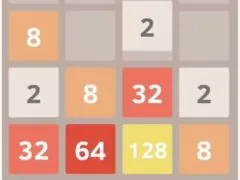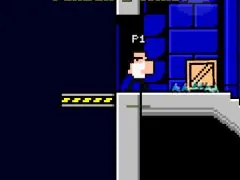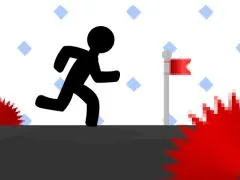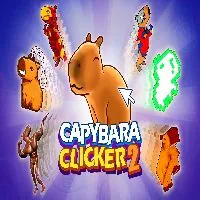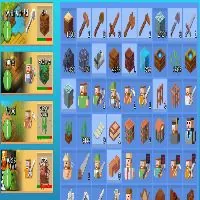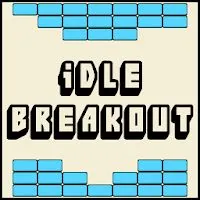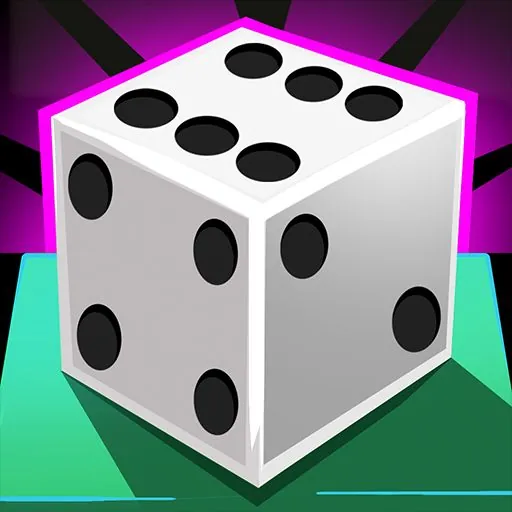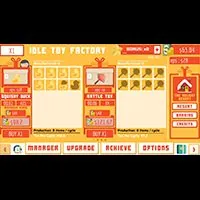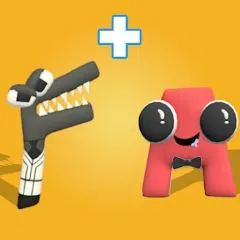HAPPY ROOM
SIMILAR GAMES
Description
Happy Room - CGUB
About Happy Room - CGUB
Welcome to the fascinating and peculiar world of Happy Room, a uniquely engaging physics-based simulation game where creativity meets destruction. Developed with a focus on providing a truly open-ended experience, Happy Room places players in the role of a scientific experimenter within a virtual laboratory. Our primary objective in this digital sandbox is to meticulously test the efficacy of an extensive arsenal of **weapons** and **traps** against a series of willing, albeit digital, **test subjects**. This game transcends typical entertainment by offering a profound sense of agency, allowing players to design elaborate and often darkly humorous scenarios of destruction.
The core of Happy Room lies in its incredibly detailed and interactive environment. Players are presented with a variety of **tools**, from the seemingly innocuous to the outrageously destructive. These are not merely static elements; each **weapon** and **trap** possesses distinct properties and behaviors, contributing to a complex and unpredictable chain reaction system. Our role as the player is to act as the mastermind, strategically placing and activating these **contraptions** to achieve specific, often challenging, objectives presented in each meticulously crafted level. The sheer variety of available **devices** ensures that no two scenarios will ever be quite the same, fostering endless experimentation and discovery.
The Virtual Laboratory Environment
The setting for Happy Room is a stark, clean, and well-equipped virtual laboratory. This sterile environment serves as the perfect canvas for the chaotic events that are about to unfold. Within this space, players have access to a robust set of tools and resources designed to facilitate the testing and observation of various physical phenomena and their effects on the **test subjects**. The laboratory is designed to be a flexible play area, allowing for a multitude of configurations and setups. We can arrange the **test subjects** in various positions, group them, or isolate them, all to better understand how different **traps** and **weapons** interact with them and with each other.
The physics engine at the heart of Happy Room is remarkably sophisticated, simulating forces such as gravity, momentum, friction, and impact with impressive realism. This allows for incredibly detailed and often unexpected outcomes. When a **laser** slices through a structure, or an **explosive** detonates, the resulting fragmentation, shockwaves, and debris are all rendered with a high degree of fidelity. Understanding and leveraging these physical principles is key to successfully completing the game's objectives. We are not simply pressing buttons; we are engaging with a dynamic and responsive simulation.
Mastering the Art of Experimental Destruction
In Happy Room, we are given the freedom to explore the boundaries of cause and effect. Each level presents a unique puzzle, requiring us to think critically about the placement and timing of our **experimental devices**. Do we want to trigger a cascade of **domino effects**? Perhaps we need to engineer a precise sequence of **impacts**? Or maybe the challenge calls for the maximum application of **force** or **energy**?
The game encourages a methodical approach, even amidst the inherent chaos. We learn to anticipate how a **saw blade** will react to a falling object, or how a **black hole** will distort the space around it, drawing in and crushing anything in its vicinity. The satisfaction comes not just from the act of destruction, but from the cleverness of the design. We might discover that a seemingly minor **trap**, when combined with the right environmental factors and a carefully positioned **test subject**, can lead to a spectacular and highly effective outcome. This iterative process of trial, error, and refinement is central to the Happy Room experience.
Unveiling the Arsenal: Weapons and Traps in Detail
The true magic of Happy Room lies in the sheer breadth and ingenuity of its **weapon** and **trap** catalogue. This is not a limited selection; rather, it is an expansive toolkit designed to inspire creative solutions. Each **device** has been conceived to interact with the game's physics engine in unique and often surprising ways, offering players a vast palette for their destructive experiments.
Ranged and Projectile Weapons
We have access to a variety of **projectile weapons** that can be fired at our **test subjects** and the environment. These range from simple **bullets** that can pierce and disable to more complex ammunition designed for maximum impact. Think of **rocket launchers** that deliver explosive payloads, or **energy cannons** that can vaporize targets. The trajectory, velocity, and impact force of these projectiles are all simulated with precision, allowing for strategic targeting and the creation of intricate chain reactions. We can position **turrets** to automatically fire upon activation, or manually aim and launch **missiles** for direct control over the destruction.
Melee and Contact Traps
For those who prefer a more hands-on approach to destruction, Happy Room offers a compelling selection of **melee weapons** and **contact traps**. Imagine **spinning saw blades** mounted on mechanical arms, ready to slice through anything that comes too close. We also have **spikes** that can erupt from the floor or walls, impaling unsuspecting **test subjects**. **Crushing pistons** and **grinding gears** provide further opportunities for intricate mechanical demise. The placement of these **traps** is crucial; timing their activation to coincide with the movement of the **test subjects** is often the key to success. We might set up a carefully timed sequence where a **test subject** is pushed into a series of **blades** by an external force.
Energy and Environmental Hazards
Beyond conventional weaponry, Happy Room delves into the realm of more exotic and environmental hazards. **Lasers** of varying intensity can be used to cut through materials or inflict severe burns. **Electric fields** can shock and incapacitate, while **flame throwers** engulf targets in fiery destruction. The game even features more fantastical elements, such as miniature **black holes** that can distort space and time, pulling everything towards their singularity. **Vortex generators** can create powerful winds, capable of tossing **test subjects** around the laboratory like ragdolls. These **hazards** often require a deeper understanding of physics and interaction, pushing the boundaries of our experimental design.
Explosives and Chemical Agents
No self-respecting virtual laboratory of destruction would be complete without a generous supply of **explosives**. From powerful **dynamite sticks** to sophisticated **grenades**, we can detonate carefully placed charges to cause maximum damage. The physics of **explosions** are simulated with impressive detail, creating shockwaves that can propagate through structures and affect multiple **test subjects** simultaneously. We also have access to various **chemical agents**, such as corrosive acids that eat away at materials, or potent gases that can incapacitate or even eliminate **test subjects** over time. The strategic use of **explosives** and **chemical agents**, often in combination with other **traps**, can lead to some of the most dramatic and effective solutions.
Advanced and Unique Contraptions
As we progress through Happy Room, we unlock increasingly bizarre and powerful **contraptions**. These might include devices that manipulate gravity, create localized temporal distortions, or generate focused sonic blasts. The sheer novelty of these **advanced tools** opens up entirely new avenues for experimentation. We might use a **gravity manipulator** to lift a **test subject** high into the air before dropping it onto a bed of **spikes**, or employ a **temporal accelerator** to speed up the effects of a slow-acting **chemical agent**. These unique **devices** are the cornerstone of the game's enduring appeal, constantly offering fresh challenges and opportunities for creative destruction.
Understanding Test Subjects and Their Behavior
The **test subjects** in Happy Room are not merely static targets; they are simulated entities with basic behaviors that add a layer of complexity and unpredictability to our experiments. While they are clones, their reactions to the **traps** and **weapons** are simulated with a degree of realism that enhances the overall experience. We must learn to anticipate their movements and reactions to effectively achieve our objectives.
Basic Movement and Reactions
Our **test subjects** exhibit a rudimentary form of **locomotion**, often moving randomly or in response to stimuli. They can be nudged, pushed, or drawn towards certain points. Crucially, they react realistically to **damage**. A **laser** might cause them to flinch or fall, an **explosion** can send them flying, and sustained **trauma** will eventually lead to their incapacitation. Understanding their fragility and their inherent **physics** based responses is fundamental to designing effective **trap** sequences.
Environmental Interactions
The **test subjects** interact with the environment in predictable ways. They will fall if platforms beneath them are removed, they will be carried by simulated **wind currents**, and they will be affected by **gravity** just like any other object in the simulation. We can use these **environmental interactions** to our advantage, positioning **traps** in locations where the **test subjects** are likely to end up. For instance, we might place a series of **spikes** directly below a platform that we intend to break.
Strategic Placement of Subjects
A key aspect of mastering Happy Room involves strategically placing the **test subjects** before activating our **traps**. We can group them together to maximize the effect of area-of-effect **weapons** like **explosives**, or we can isolate them to focus the power of a single **trap** on one individual. The game often provides tools to manipulate the positioning of the **test subjects**, allowing us to set up the perfect scenario for destruction.
Achieving Level Objectives: The Core Gameplay Loop
While Happy Room offers a sandbox for boundless experimentation, each level is designed with specific goals that guide our play and challenge our ingenuity. These objectives provide structure and purpose to our destructive endeavors, encouraging us to think creatively about how we utilize the available **weapons** and **traps**.
Diverse Mission Parameters
The **objectives** in Happy Room are varied and often require unique approaches. Some levels might task us with eliminating all **test subjects** within a certain timeframe, while others might require us to achieve a specific amount of **damage** or destruction using a particular **weapon**. We might be asked to trigger a complex **chain reaction** involving multiple **traps**, or to strategically position the **test subjects** in specific locations before initiating the destruction. The game constantly introduces new challenges that keep the gameplay fresh and engaging.
Maximizing Damage and Efficiency
A common **objective** is to achieve the highest possible **damage** score. This encourages us to experiment with combinations of **weapons** and **traps** that are most effective. We learn that certain **devices** work better against specific **test subjects** or in particular configurations. The goal is not just to destroy, but to do so in the most efficient and spectacular way possible. This might involve creating elaborate Rube Goldberg esque **trap** sequences that culminate in mass destruction.
Creative Problem Solving with Limited Resources
Some **levels** introduce constraints, such as a limited number of **weapons** or a restricted area for placement. These limitations force us to think outside the box and devise clever solutions. We might have to re-purpose seemingly minor **traps** or find unconventional ways to combine **devices** to achieve the desired outcome. This aspect of **creative problem solving** is a hallmark of Happy Room and is central to its enduring appeal.
Unlocking New Tools and Possibilities
Successfully completing **level objectives** is often rewarded with the unlocking of new **weapons**, **traps**, and **features**. This progression system ensures that we are constantly discovering new ways to interact with the game and its simulation. The anticipation of unlocking the next powerful or peculiar **device** serves as a significant motivator to continue playing and experimenting.
The Future of Experimental Simulation
Happy Room represents a significant step forward in the realm of physics-based simulation and sandbox games. Its intricate physics engine, vast array of **weapons** and **traps**, and engaging **level objectives** combine to create an experience that is both deeply challenging and incredibly entertaining. We believe that the game’s commitment to player freedom and its emphasis on creative problem solving set a new standard for what is possible in digital entertainment.
The replayability of Happy Room is virtually limitless. Each session offers a fresh opportunity to explore new combinations, test new theories, and discover unexpected outcomes. The game encourages a playful and experimental mindset, allowing players to indulge their curiosity and their darker impulses in a safe, virtual environment. We are constantly impressed by the ingenuity and creativity of our player community, who continue to find new and innovative ways to push the boundaries of the simulation.
As technology advances, we envision even more sophisticated simulations and interactive environments. Happy Room is a testament to the power of combining advanced physics with intuitive gameplay design. We are proud to offer a platform where players can truly unleash their imaginations and explore the fascinating interplay of **cause and effect** in a world of their own making. The satisfaction derived from a perfectly executed **trap** sequence or a cleverly devised solution is a reward in itself, underscoring the deep engagement that Happy Room provides. We invite everyone to step into our virtual laboratory and experience the unique thrill of scientific discovery, one carefully orchestrated experiment at a time.
Happy Room sets you in a virtual laboratory where you are tasked with testing out various weapons and traps on clone test subjects. The game provides a sandbox environment filled with all manner of dangerous and bizarre contraptions. From lasers and saws to explosives and black holes, you arrange these devices strategically to create the most effective sequence to damage the clones. The objective is to fulfill the challenging goals set for each level, which often require you to experiment with the placement and combination of traps.
Strategy and Destruction
Each level in Happy Room offers a different set of objectives and budgets, pushing you to think creatively to maximize your damage output within the constraints. You’ll unlock more destructive devices as you progress, allowing for even more elaborate and chaotic setups. The game encourages you to revisit levels with your newly acquired arsenal to achieve better efficiency and higher scores. The physics-based reactions of the traps and clones add a layer of unpredictability, making each session uniquely destructive. Engage in this macabre yet oddly satisfying scientific endeavor to discover just how damaging your contraptions can be.
